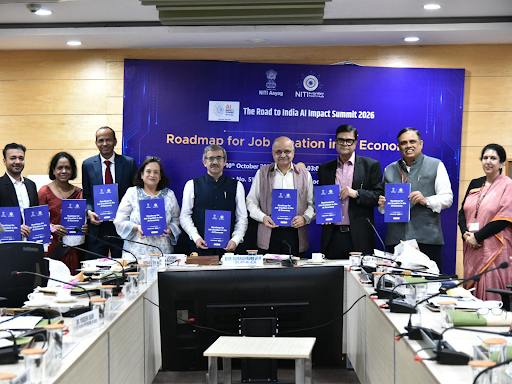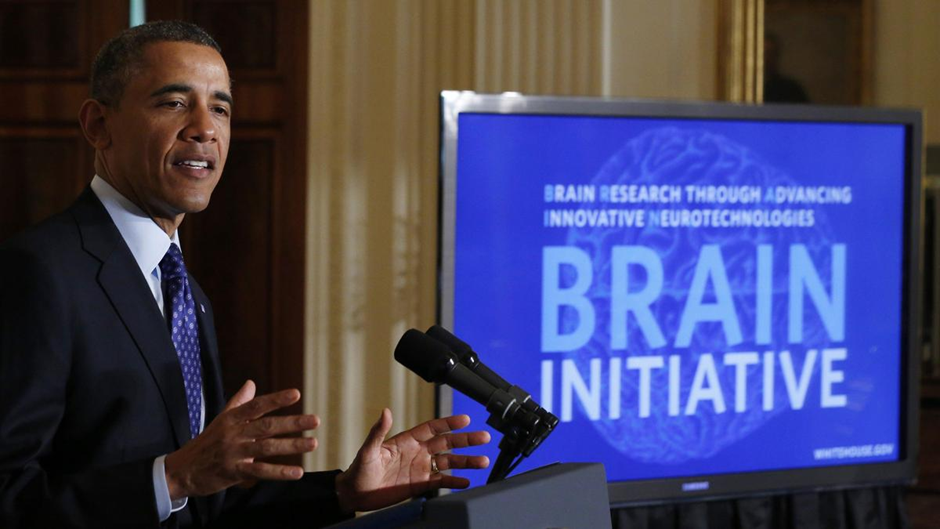



NITI Aayog’s AI roadmap promotes human-centric growth by driving large-scale skilling and reskilling, boosting startups, and ensuring ethical AI use. Targeting sectors like healthcare and agriculture, it aims to create jobs, promote innovation, and position India as a global AI leader for inclusive prosperity.

Copyright infringement not intended
Picture Courtesy: aninews
NITI Aayog released a report titled “Roadmap for Job Creation in the AI Economy”, which analyzes how Artificial Intelligence is transforming India’s technology and services sectors.
The report addresses how Artificial Intelligence (AI) will impact jobs in IT and Customer Experience (CX) sectors. It presents two different futures for India, emphasizing that the outcome depends entirely on the strategic choices made today.
If India fails to adapt, it could face huge job losses. By 2031, the tech services workforce could shrink from its 2023 level of 7.5-8 million to 6 million. The CX sector could decline from 2-2.5 million to 1.8 million. This represents a potential net loss of over 1.5 million jobs.
If India acts decisively, it can turn the disruption into a generational opportunity. The tech workforce could swell to 10 million, and the CX workforce could grow to 3.1 million by 2031, creating up to 4 million new opportunities and positioning India as the "AI workforce capital of the world."
The report uses a Work-Worker-Workforce (3W) framework to provide analysis of AI's impact.
Change in Work: AI is fundamentally changing how work is done.
Change in the Worker: The roles and skills required of workers are evolving rapidly.
Change in the Workforce: Structure of organizations is transforming.

The report highlights that India is at a tipping point due to three major challenges that could push it towards the negative job-loss scenario.
The Scale of Job Displacement: A significant portion of the formal workforce is at risk. According to the Centre of Advanced Study in India, over 60% of formal sector jobs are susceptible to automation by 2030.
Gaps in Education and Skilling:
A Widening AI Talent Gap
Integrate AI in the Education System
Become a Global AI Talent Magnet
Build AI Skilling Engine for Current Workforce
Establish India Open-Source AI Commons
Operationalize Federated National Compute & Innovation Grid
The NITI Aayog roadmap provides an analytical and urgent blueprint for India's labor policy in the AI age. It stresses that job evolution is the goal, not just job loss mitigation. Its key strength lies in its integrated, mission-mode approach, seeking to unify skilling, education, and infrastructure under one umbrella.
Source: PIB
|
PRACTICE QUESTION Q. Artificial Intelligence is a double-edged sword, capable of both creating and destroying jobs." Critically analyze. 150 words |
The IndiaAI Mission is a strategic government initiative to build a robust and inclusive AI ecosystem. Its seven core pillars cover compute capacity, foundational models, datasets, application development, skills, startup financing, and ethical AI.
India has not yet passed a dedicated AI law, but it is moving toward a comprehensive AI policy. The government is favoring a phased, adaptive, and risk-based regulatory framework, inspired by global standards like the EU AI Act but tailored to India's context. Regulatory initiatives are focusing on transparency, accountability, and ethical considerations.
Digital India BHASHINI is an AI-powered language technology initiative by MeitY that aims to provide easy access to internet and digital services in all 22 scheduled Indian languages. The platform enables AI-driven machine translation and voice-based access, supporting the creation of content in Indian languages and promoting digital inclusion.




© 2025 iasgyan. All right reserved